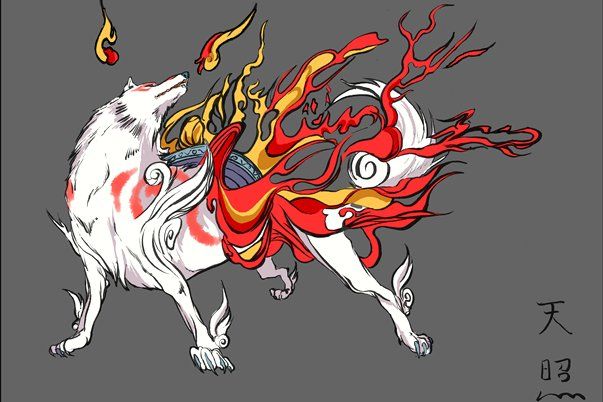

Some of its fairy tale moments might fly right over the heads of many North American gamers, to say the least, but the heart and themes of the game remain true and archetypal without coming off as trite or dispensable. Expect several trips to Wikipedia while playing Okami. Okami draws heavily from Japanese mythical history and folklore to craft its story and settings. It’s a Japanese word which means “great spirit” or “wolf”, so its a kind of wordplay. Okami translates roughly into something in English, I’m sure.
Okami ps2 controls full#
Still, I would recommend getting a hold of either motion controller to get the full immersion into this watercolor world and its unconventional gameplay.

It’s not much of a loss to forgo the motion controls. I had the pleasure of playing through Okami with the use of the Wii’s motion controls the first time and though I didn’t have the PlayStation Move motion controller (because I’m not a nerd) when I played the Okami HD edition, I still found it an enjoyable game nonetheless.
Okami ps2 controls ps3#
Critical praise despite poor sales eventually resulted in Okami returning to the PlayStation, to the PS3 specifically, for an updated high-definition remaster in 2012. Hopefully, Capcom can revive this franchise for the modern era.Originally developed by Clover Studio and published by Capcom, Okami was first released on the PS2 in 2006 and then to a more widespread reception on the Nintendo Wii in 2008. So while Okami was considered a commercial failure when it was first released, time has been kind towards the game and its many ports, but it is unfortunate that no follow-up has been made since its HD remasters.įor many of us without Nintendo consoles, Okami provided a glimpse into the general Zelda gameplay style while also introducing wholly original mechanics that have not been replicated in many games. This game has not seen a rerelease and could stand equally alongside the PlayStation 2 original. It provided a clear comparison for many, with Okami standing out thanks to its art style and mechanics.Ī sequel for Okami was made on the Nintendo DS, with Okamiden truly making full use of the system’s stylus and touch screen for the return of the paintbrush mechanics. In this game game, Link could turn into a wolf for a good chunk of the game. Since then, Okami has made its way to every modern console including the PlayStation 4, Xbox One, PC, and Nintendo Switch.Ĭoincidentally, Okami came out before The Legend of Zelda: Twilight Princess. Things went full circle when Okami was ported to the Nintendo Wii, which truly was the best way to showcase the distinctive paintbrush mechanics that the game had. Though arguably, these paint techniques were a lot more useful and less contextual compared to their Zelda counterparts. What replaced Link’s arsenal of sub-weapons and items was Okami’s creative paintbrush mechanic, where players could draw things like fire or bombs to affect the game world and use these powers in combat.Īs players progressed through the game, learning more and more Celestial Paintbrush drawings was a clear analogue to the different songs Link would learn in Ocarina of Time and The Wind Waker. The Resident Evil and Devil May Cry creator has admitted to this fact on numerous occasions and it is clear to see in its gameplay.įrom its lock-on focused combat to Amaterasu herself being accompanied by a tiny fairy-like guide, Okami was very much the PlayStation 2’s answer to The Legend of Zelda: Ocarina of Time or The Wind Waker. The game’s director, Hideki Kamiya, was not shy to discuss the massive impact that Nintendo’s Zelda franchise had on Okami. Okami also came at a time when interest in Japanese culture was at an all-time high, with the widespread use of the internet and mainstream inclusion of Japanese anime and video games really making Okami a true ambassador of ancient Japanese culture and folklore. It also served as a sort of swansong for the system, as the PlayStation 3’s release came soon after. This made Okami one of the most visually appealing games on the PlayStation 2, one that provided a breath of fresh air when compared to more realistic games at the time.

This came at a time when cel-shaded graphics were in vogue in the wider gaming industry, with games like Jet Set Radio and The Legend of Zelda: The Wind Waker paving the way for Okami’s more traditional take on the aesthetic. The game is rendered in a beautiful, paintbrush art style that evokes the ink wash painting style that was predominant in ancient China and Japan. Players must travel the world around them as the eight-headed demon Orochi is resurrected and curses the land of Nippon. Set in ancient Japan, Okami had players in control of the goddess Amaterasu in her wolf form.


 0 kommentar(er)
0 kommentar(er)
